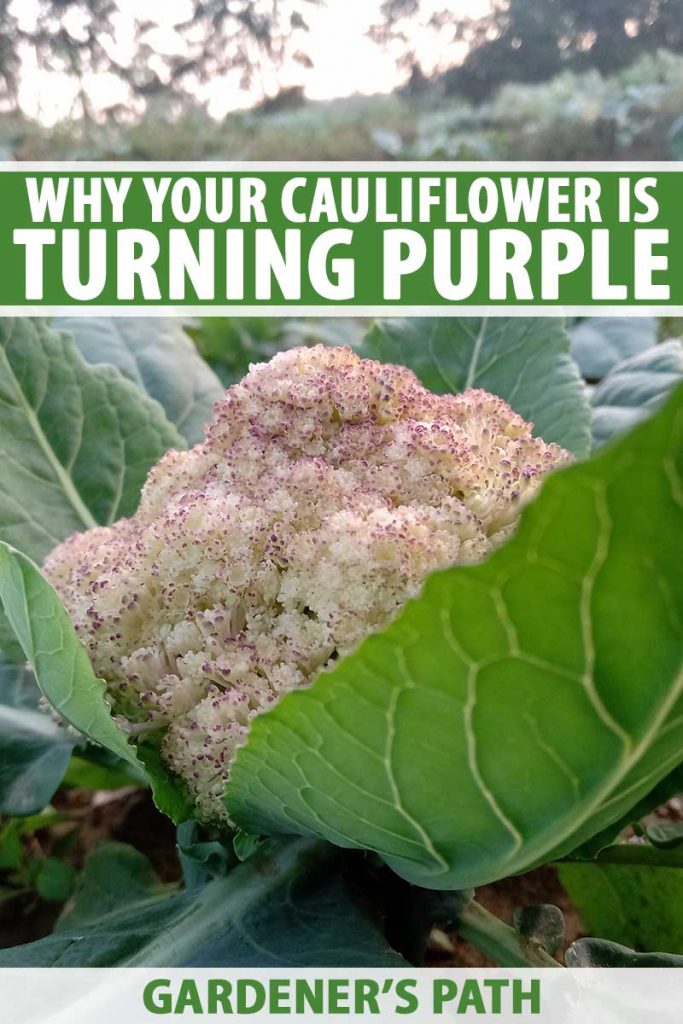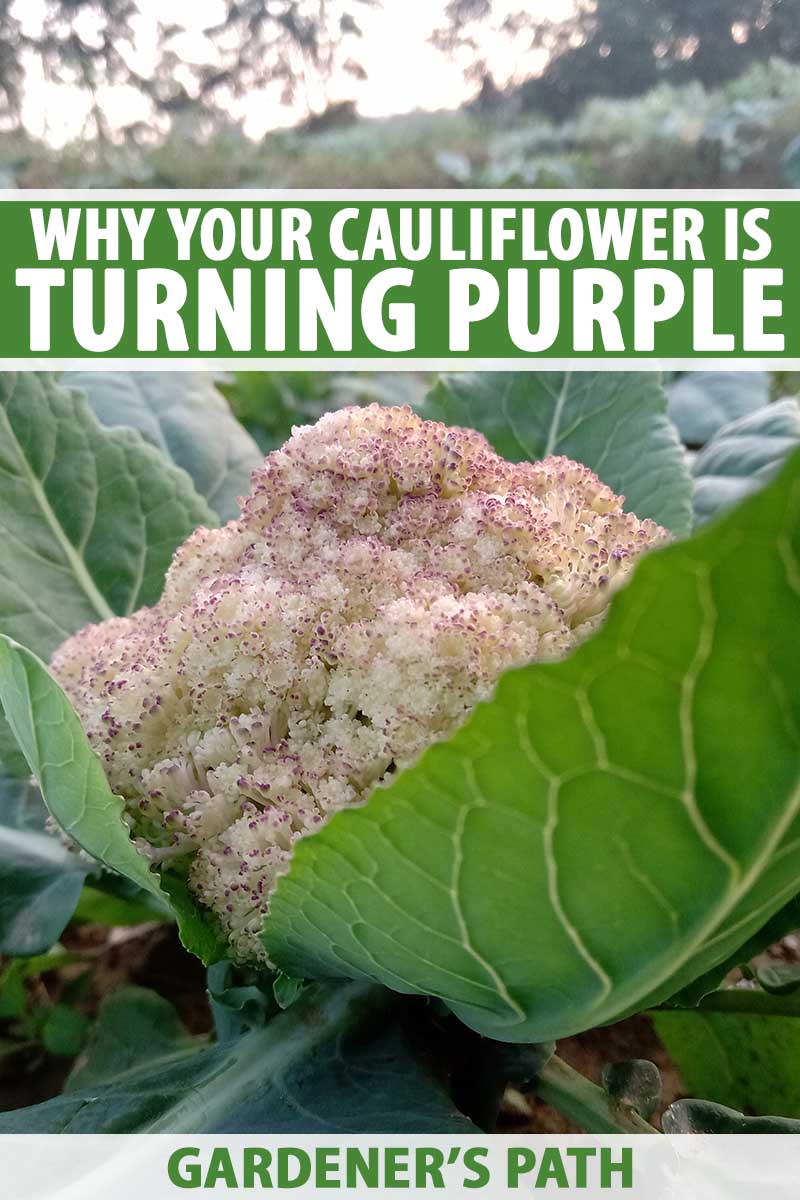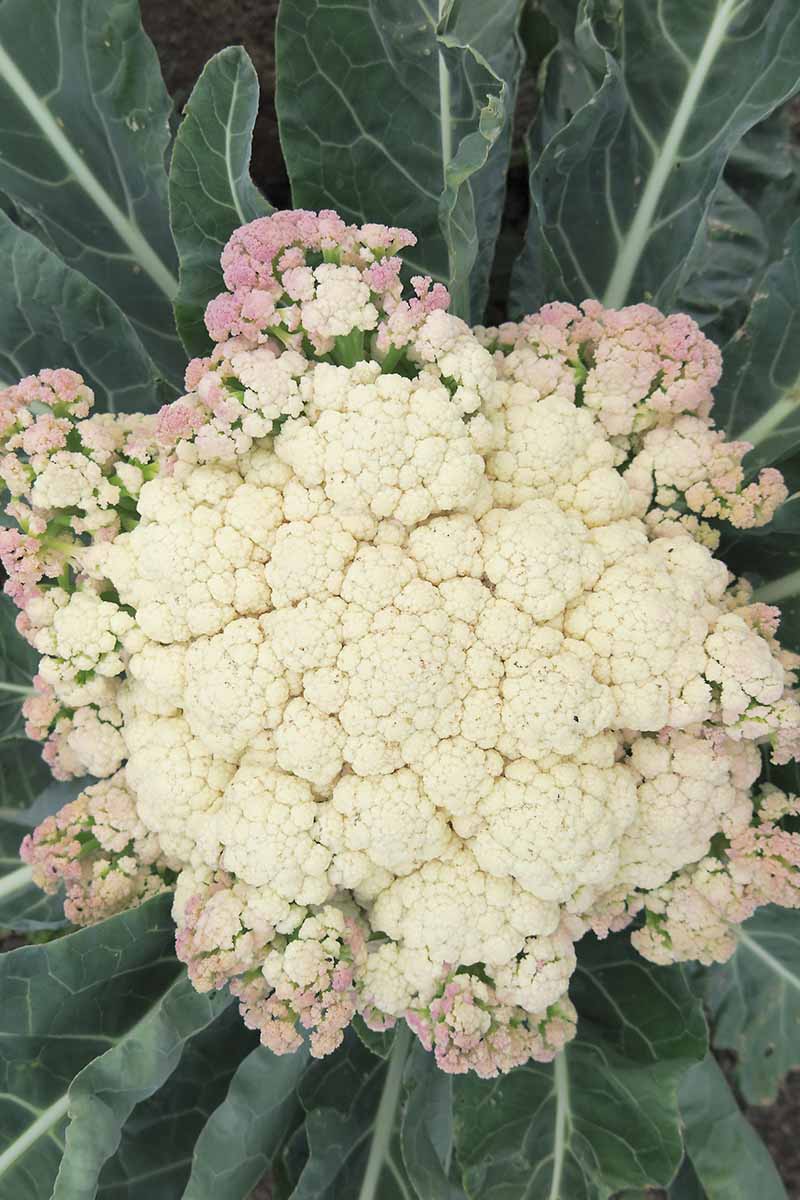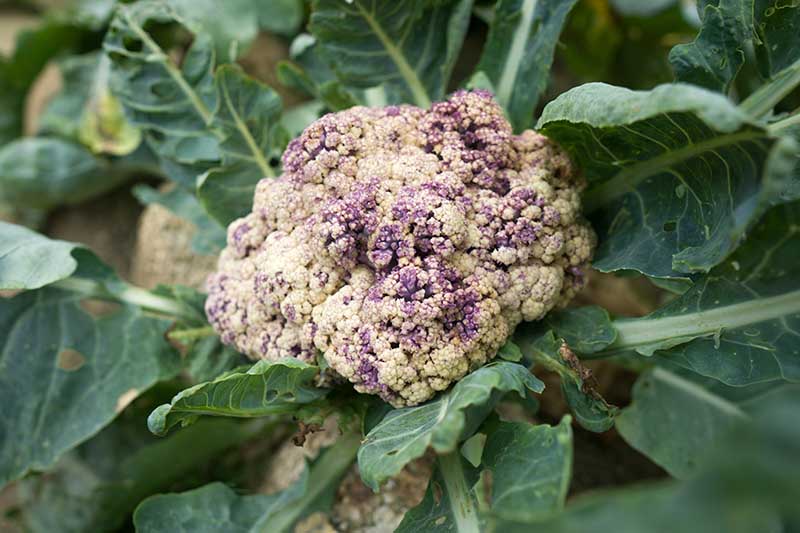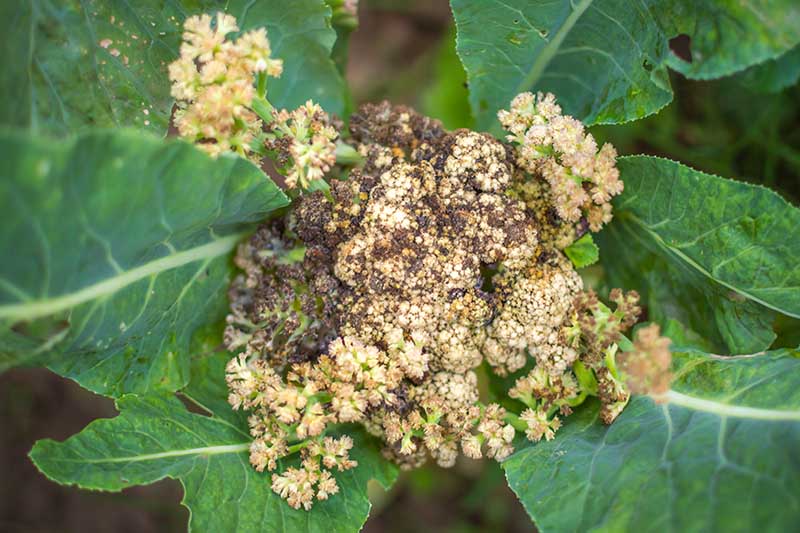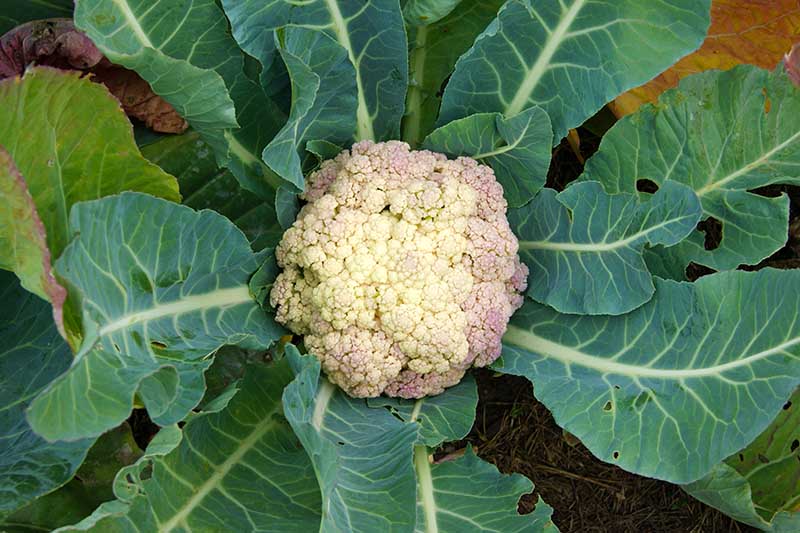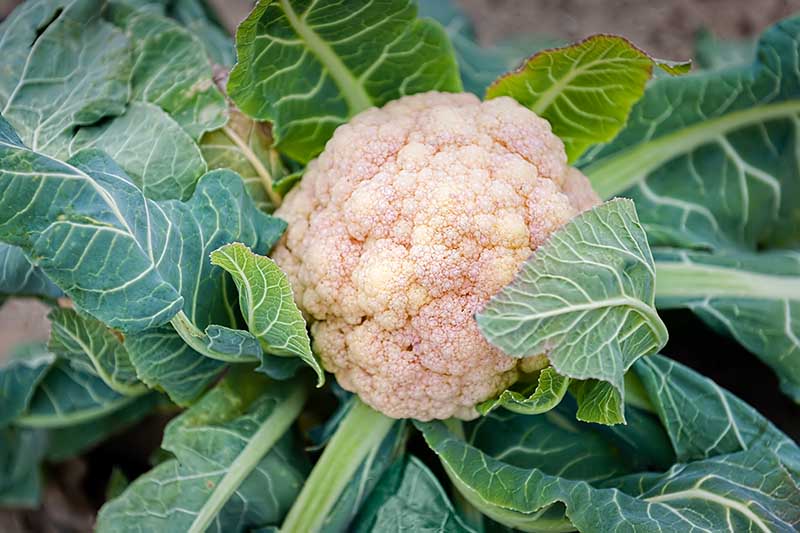Sometimes, heads that should be snowy white take on a purplish hue. A member of the Brassicaceae family, cauliflower can suffer a number of difficulties when grown in home garden, such as not forming heads. If you are new to growing this cruciferous vegetable, why not see our guide to growing cauliflower here. We link to vendors to help you find relevant products. If you buy from one of our links, we may earn a commission.
Cauliflower, White as Snow
When I was a child, cauliflower was strictly a white vegetable. That’s how you knew it wasn’t broccoli!
Today, there are orange, green, and purple varieties, in addition to the snowy white curds filling grocers’ shelves. But sometimes, developing white heads begin to look a little pink or purple. It may be around the edges, across the tops of the florets, or on their stems. In commercial circles, this is one reason to downgrade a crop, and you may never see the fruits of this harvest on a major grocer’s shelf. Let’s find out what it means for the home gardener.
What’s Wrong with a Little Purple?
There are many cauliflower varieties from which to choose, so read seed packets and catalog descriptions carefully. Some white ones, such as ‘Snow Crown,’ are known to blush pink in the summertime. This is not an anomaly, and it does not degrade the flavor of the curds.
And as mentioned, there are true purple cultivars as well, like the heading ‘Graffiti,’ and sprouting ‘Rambo Purple.’ The vivid pigment is the result of a gene mutation and an abundance of the flavonoid anthocyanin. Also, there’s the possibility that you let a hybrid plant go to seed, saved the seed, and then planted it. As you may recall, seeds from hybrids do not produce “true.” This means that you won’t get a clone of the hybrid plant from which you harvested the seeds.
Instead, you’ll get unpredictable characteristics that may resemble the traits of one or more of the parent plants involved the cross-breeding process. If you have harvested the seeds of an heirloom cauliflower, but had several varieties growing in the garden at the same time, cross-pollination may be the culprit. To recap, if you’re not growing a white variety known to have some pigmentation, or a purple cultivar, or seed from a hybrid, or an heirloom grown in the company of other varieties, you need to consider climatic influences as the source of the unusual pigmentation. Brassicas, like cauliflower and broccoli, prefer cool temperatures. If you are attempting to bring a crop to maturity and the temperature zigs and zags from cold to hot, or there’s a heatwave, the curds may react adversely.
The expert horticulturists at the University of Minnesota Extension say, “Long days and hot weather in the summer cause… cauliflower curds to develop a red-purple discoloration and leaves through the center of the head.” Can it be avoided? Let’s find out.
Best Practices for Prevention
First, know your USDA Hardiness Zone, and select only those plants that are suited to your region. Avoid the kinds of temperature spikes that may cause a crop to change color by planting so that heads mature before summer heats up, or after it cools down. Consider both early and late-maturing cultivars, and match the days to maturity to your calendar, to make the wisest choices. Once plant growth is underway, be proactive. If changeable temperatures are in the forecast, install floating row covers to help with temperature control. As well as keeping plants warm when there’s a cold snap, they also filter direct sunlight well when the heat kicks up. In addition, blanching can help to shield curds from direct sunlight. This is a process of wrapping the leaves of plants around developing heads. Today’s modern cultivars often self-blanch, but older varieties need to have their leaves manually gathered and tied to achieve the same result. If you find that your contemporary varieties are not adequately self-blanching, give them a helping hand by bending their outermost leaves up and over the curds and securing them. You may have to partially cut or crack the midribs to achieve this. Sometimes, failure to blanch may result in white cultivars that shade toward green or yellow.
Discoloration of Different Origins
There are other reasons why cauliflower heads may become discolored.
The presence of diseases like bacterial soft rot, cauliflower mosaic virus, and powdery mildew may cause not only curd discoloration, but physical irregularities as well. They are brown, black, or gray, with fuzzy, weepy, or dusky appearances. Most affect the leaves as well, and are often preceded by an insect infestation, or extended wet weather. In addition, developing curds that are not blanched and receive direct sunlight may scorch and develop brown patches.
Is It Edible?
Curds that should be white, but have tinges of color, need to be examined closely.
When there are hints of purple with no visible signs of insect infestation or disease, you may harvest and enjoy. If the curds have blemishes that are disease-like in nature, and especially if there’s a foul smell and/or mushy consistency, discard them. And finally, if the sun has scorched portions of the curds to a charred brown, you may cut off the damaged portions and consume the unblemished florets. As for flavor, white cauliflower tends to be on the bitter side in comparison to boldly pigmented cultivars. Those that blush due to heat exposure may become more bitter, but some folks say that little bit of color makes them all the sweeter. You decide! It’s okay when cauliflower that’s supposed to be white becomes tinged with pink or purple. The crop may not be supermarket-worthy, but it is edible, and may even be a little sweeter.
For the best results, plan well. Grow plants suited to your region, avoid maturation during summer heat, and inhibit temperature fluctuations and direct sunlight with floating row covers. And finally, blanch varieties that require it, and assist modern cultivars with the practice as needed. Enjoy crops that exhibit a mere purplish tint. Cut away portions of curds scorched by the sun, and dispose of entire heads that exhibit the discoloration of disease, that are malodorous, or that are mushy. How does your cauliflower grow? Tell us about your experiences in the comment section below. Need more information on growing cauliflower? Some of our other guides might be of help:
13 of the Best Cauliflower Companions Why Is My Cauliflower Fuzzy? Troubleshooting Tips for Ricing in Curds How to Grow Cauliflower in Containers
© Ask the Experts, LLC. ALL RIGHTS RESERVED. See our TOS for more details. Originally published on February 14, 2020. [lastupdated]. Uncredited photos: Shutterstock.
